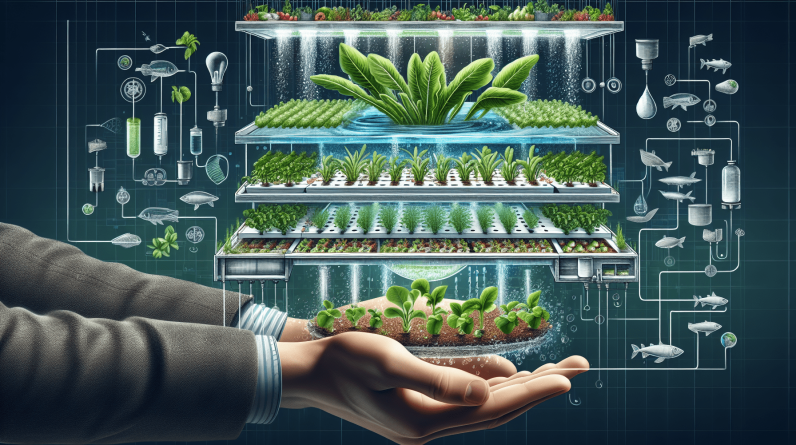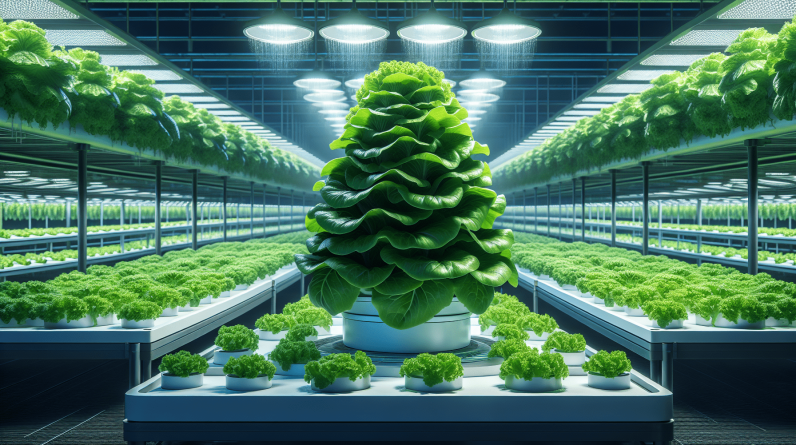
Can Vertical Hydroponic Gardens Maximize Your Space?

This image is property of images.unsplash.com.
What are Vertical Hydroponic Gardens?
Vertical hydroponic gardens are innovative growing systems that utilize less space by stacking plant containers vertically. Instead of traditional horizontal planting, vertical gardens are designed to allow plants to grow upward, maximizing space efficiency. This method is ideal for individuals with limited space or who want to grow a variety of plants in a small area.
Benefits of Vertical Hydroponic Gardens
Vertical hydroponic gardens offer numerous benefits for both home gardeners and commercial growers. These benefits include maximizing space, increasing plant yield, conserving water, reducing the risk of pests and diseases, and enabling year-round cultivation. By growing plants in a vertical arrangement, you can make the most of your limited space while enjoying a bountiful harvest.
How Do Vertical Hydroponic Gardens Work?
Vertical hydroponic gardens operate on the same principles as traditional hydroponic systems, with the added advantage of utilizing vertical space. Plants are grown in containers that are stacked vertically, allowing them to receive adequate sunlight, water, and nutrients. These systems are often automated, making it easier to control growing conditions and ensure optimal plant growth.
Components of a Vertical Hydroponic Garden
A typical vertical hydroponic garden consists of several key components, including:
-
Growing Medium: Instead of soil, plants are grown in a soilless medium such as perlite, rockwool, or coconut coir, which provides support and helps retain moisture.
-
Nutrient Solution: Plants receive essential nutrients through a nutrient-rich water solution that is delivered directly to their roots.
-
Water Pump: A pump is used to circulate the nutrient solution through the system, ensuring that plants receive proper hydration and nutrients.
-
Grow Lights: In indoor vertical hydroponic gardens, grow lights are used to provide the necessary light for plant growth.
-
Support Structure: Sturdy vertical supports are used to stack the plant containers securely and create a stable growing environment.
-
Automation System: Some vertical hydroponic gardens are equipped with automated systems that control the watering and nutrient delivery processes, making maintenance easier.
By understanding how each component works together, you can create an efficient and productive vertical hydroponic garden in your own space.
Advantages of Vertical Hydroponic Gardens
Vertical hydroponic gardens offer a range of advantages that make them an attractive option for both novice and experienced gardeners. Some of the key advantages include:
Maximizing Space Efficiency
One of the primary benefits of vertical hydroponic gardens is their ability to maximize space efficiency. By stacking plant containers vertically, you can grow a larger number of plants in a smaller area. This is especially beneficial for urban gardeners or individuals with limited outdoor space.
Increased Plant Yield
Vertical hydroponic gardens have been shown to increase plant yield compared to traditional gardening methods. By providing plants with a consistent supply of water, nutrients, and light, vertical gardens promote healthy growth and robust yields. This can result in a more bountiful harvest for home gardeners and higher productivity for commercial growers.
Water Conservation
Vertical hydroponic gardens are designed to conserve water by delivering a precise amount of water directly to the plant roots. This method uses up to 90% less water than traditional soil gardening, making it an eco-friendly option for water-conscious gardeners. By reducing water waste, vertical hydroponic gardens help protect the environment and promote sustainability.
Reduced Risk of Pests and Diseases
One of the advantages of hydroponic growing systems, including vertical gardens, is their reduced risk of soil-borne pests and diseases. Without soil, plants are less vulnerable to common pests such as aphids, root rot, and nematodes. This results in healthier plants that require fewer chemical inputs, leading to a more sustainable and eco-friendly gardening experience.
Year-Round Cultivation
Vertical hydroponic gardens enable year-round cultivation, regardless of external weather conditions. By controlling indoor growing conditions such as temperature, humidity, and light exposure, you can grow fresh produce throughout the year. This is especially beneficial for gardeners in regions with harsh climates or limited growing seasons.
Types of Vertical Hydroponic Gardens
There are several different types of vertical hydroponic gardens available, each with its own unique design and advantages. Some popular types include:
Tower Gardens
Tower gardens are vertical hydroponic systems that consist of stacked growing pots or columns. Each column contains multiple planting pockets where plants can grow vertically. Tower gardens are ideal for growing a variety of leafy greens, herbs, and small vegetables in a compact space.
Wall-Mounted Gardens
Wall-mounted gardens are vertical growing systems that are attached to a wall or other vertical structure. These gardens are designed to maximize space by utilizing vertical surfaces for plant growth. Wall-mounted gardens are perfect for small patios, balconies, or indoor spaces where floor space is limited.
A-Frame Gardens
A-frame gardens are triangular-shaped structures that support multiple tiers of plant containers. These systems are versatile and can be used indoors or outdoors to grow a wide range of crops. A-frame gardens are ideal for maximizing space while providing ample growing area for plants.
Hanging Gardens
Hanging gardens are vertical hydroponic systems that suspend plant containers from a support structure such as a ceiling or wall. These gardens are great for small spaces or areas with limited floor space. Hanging gardens are popular for growing trailing plants, herbs, and ornamental flowers.
By choosing the right type of vertical hydroponic garden for your space and plant preferences, you can enjoy the benefits of efficient vertical growing.

This image is property of images.unsplash.com.
Setting Up a Vertical Hydroponic Garden
If you’re interested in setting up a vertical hydroponic garden in your space, follow these steps to get started:
Step 1: Choose a Suitable Location
Select a location for your vertical hydroponic garden that receives adequate sunlight and is convenient for regular maintenance. Indoor spaces with access to natural light or grow lights are ideal for year-round cultivation.
Step 2: Assemble Your Vertical Garden
Gather all the necessary components for your vertical hydroponic garden, including plant containers, growing medium, nutrient solution, water pump, grow lights, and support structure. Assemble the garden according to the manufacturer’s instructions, ensuring that each component is securely in place.
Step 3: Plant Your Crops
Plant your desired crops in the vertical garden containers, ensuring that each plant receives enough space to grow vertically. Water your plants with the nutrient solution, making sure to adjust the pH level as necessary for optimal growth.
Step 4: Monitor and Maintain Your Garden
Regularly monitor your vertical hydroponic garden for signs of plant health, nutrient deficiencies, or pests. Adjust watering and nutrient levels as needed to promote healthy plant growth. Maintain the system by cleaning and sanitizing components regularly to prevent mold or algae growth.
Step 5: Harvest Your Produce
When your plants have fully matured, harvest your fresh produce for consumption. Enjoy the fruits of your labor and experiment with different crops to maximize the benefits of your vertical hydroponic garden.
By following these steps, you can create a thriving vertical hydroponic garden in your space and enjoy the numerous benefits of this innovative growing system.
Conclusion
Vertical hydroponic gardens offer a sustainable, efficient, and space-saving approach to growing fresh produce at home or in a commercial setting. By maximizing space, conserving water, reducing the risk of pests and diseases, and enabling year-round cultivation, vertical gardens provide numerous benefits for gardeners of all experience levels. Whether you’re a novice gardener looking to make the most of limited space or a commercial grower seeking higher productivity, vertical hydroponic gardens can help you achieve your gardening goals. Consider implementing a vertical hydroponic garden in your space to enjoy a bountiful harvest of fresh, nutritious crops year-round.










